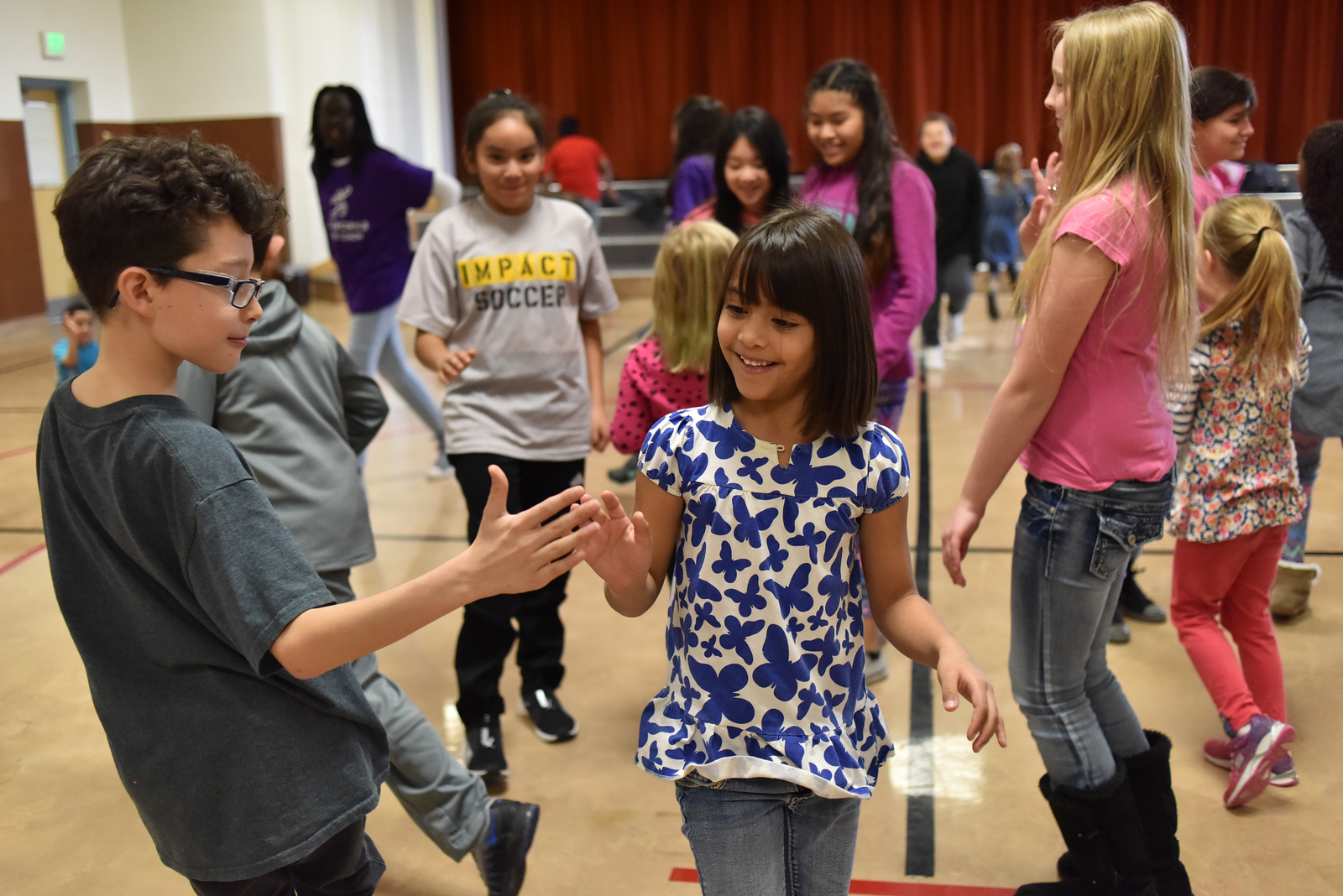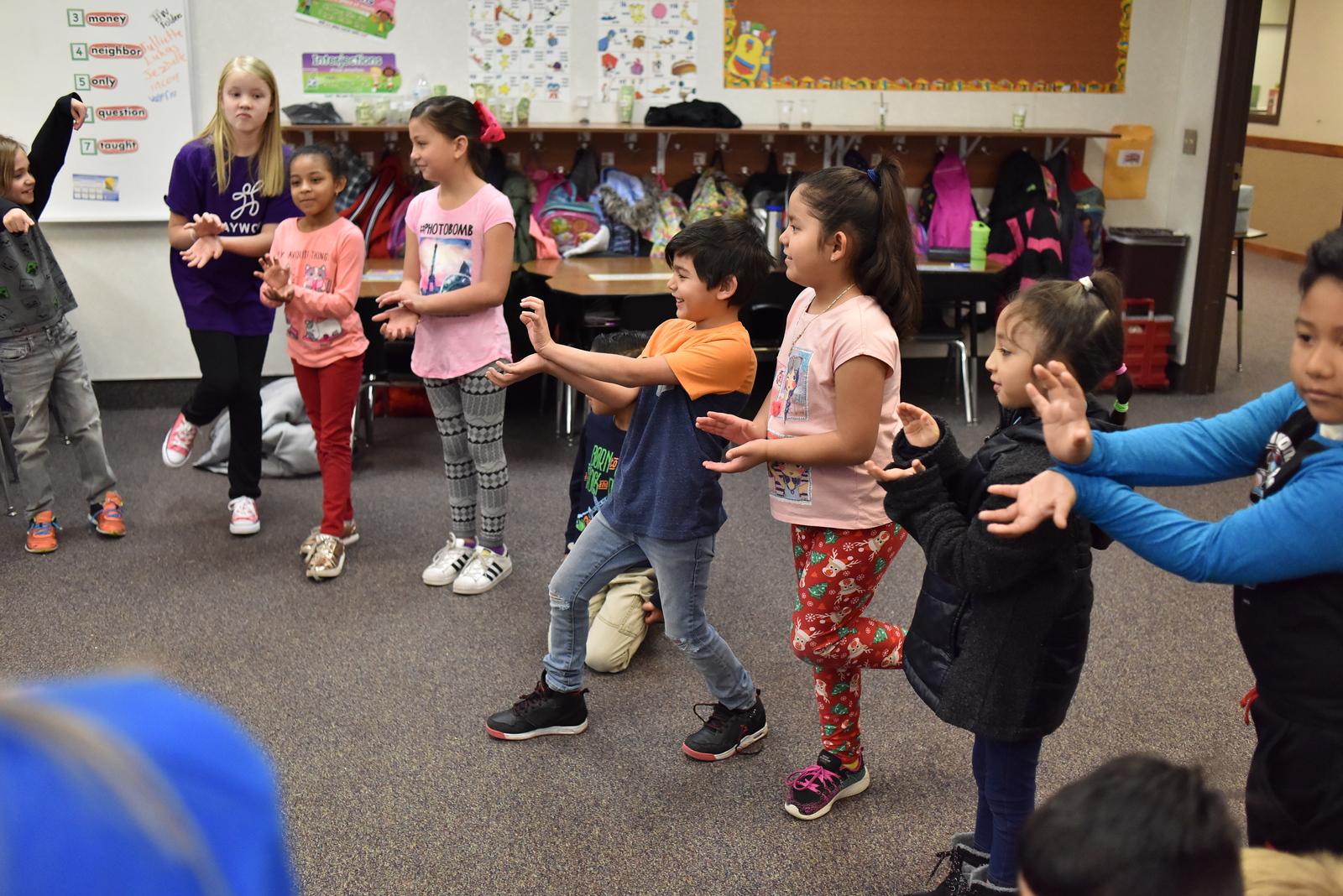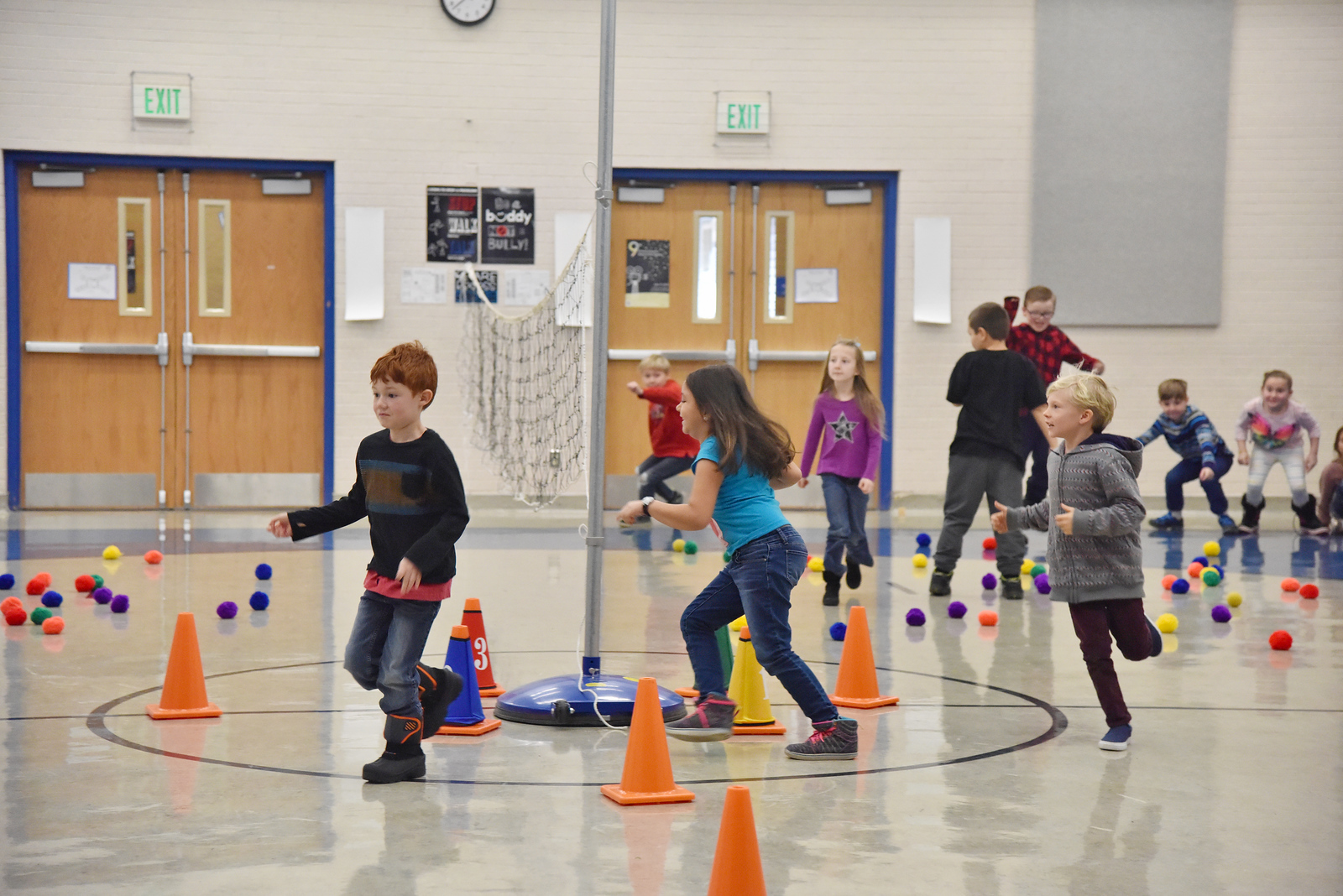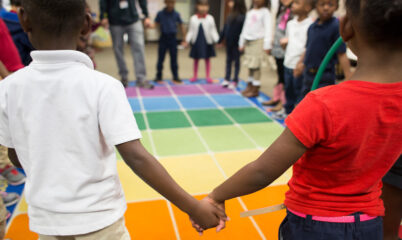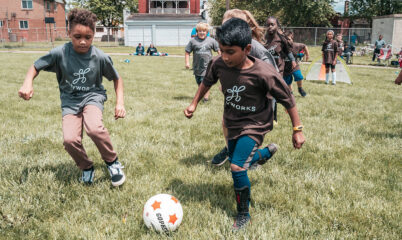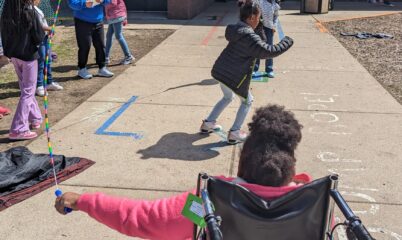From snow and cold to rain, smog, and everything in between, weather can throw a wrench in your outdoor recess plans. When inclement weather strikes, transitioning to indoor play can offer an opportunity to keep students engaged by trying new games and utilizing spaces like classrooms, hallways, and cafeterias in creative ways.
Use the resources in this guide to build your indoor recess plan! Consider:
- Spaces available
- Making those spaces physically safe
- Games you can play in the space
- Setting clear expectations with students and game boundaries
Share this plan with other school staff and students so everyone can make adjustments when outdoor play is not an option. And remember, it is always helpful to ask your students what they want and to be open to their ideas about what they think will be fun to play inside!
What space is available?
With the right setup, many indoor spaces can accommodate a wide range of games. Open areas like gyms, cafeterias, and large classrooms can also be divided into smaller stations or rotational activities that allow students to choose what they want to play.
Make sure to communicate with school staff, administrators, and custodial staff to coordinate the use of each space and ensure student safety.
Cafeteria
Games can be organized for the whole cafeteria simultaneously or by table/class/small group. With limited room, students can either stand next to their seats to participate or use the space between tables. If you have available staff, volunteers or student leaders, run games at multiple tables simultaneously. Always keep safety in mind when deciding how many students you can work with at once/what games to play in the space.
Auditorium
Various spaces in an auditorium can be used creatively to get kids active. Use aisles, stage (away from the edge), and space at front/back of the room. Games played in a line are great for this kind of space. Set up stations if possible to prevent chaos and make activities visible and available for students. Have staff and student leaders jump in to lead games and coordinate spaces whenever available.
- Museum Night Janitor (Stage)
- What are you doing?
- Over Under Relay
- Mouse Trap
- Switch
- Bubbles (Stage)
- Hula Ball
Classrooms
Many classrooms have limited space, but with teacher permission, desks can be moved to allow for more activity. If you are not able to move them, desks/chairs can be utilized in games. The great thing about classrooms is they have a lot of available resources. Consider blackboards, maps, etc., that could be used with the teacher’s permission. If there are enough supervisors or student leaders, active games can be facilitated simultaneously in multiple classrooms. Many of the cafeteria games can also be played in the classroom!
Hallways
The hallway is a good option if there is no large indoor space. Limit the number of students coming out – start with one class each time, then allow more students to come out at a time once game locations/system is established. Set this up for success by explaining safety and noise rules and available games to students before they begin. If students want to play a different game, discuss it individually – making a plan for space and safety first.
- Four Square
- Snowball Alley
- Relay races (walking)
- Jump Ropes
- Hula Hoops
- Maze Game
- Rollerball
Gym
If you have a gym, take advantage of it, even if for a limited time or with a large group. Be creative, setting a rotation for classes to use the gym for each indoor recess. Map the space similar to how you’d map out a playground. Let students know in advance what games will be played and where. Share safety rules and signals (such as a bell or whistle) so students know when recess is over. Many of the same games that are played outdoors, can be brought into a gym.
- Four Square
- Jump Rope
- Wall Ball
- Switch
- Circle Dodgeball
- Rollerball
- Relay Races
- Three Lines Basketball
- Band Aid Tag
Games that can be played anywhere
Grades K-2
No Equipment Needed
Location: Anywhere
Grades K-5
Equipment: Small item, like a marker or small toy
Location: Classroom, library, or cafeteria
Grades K-5
Equipment: No Equipment Needed
Location: Gym, auditorium, classroom
Grades 2-5
Equipment: No Equipment Needed
Location: Anywhere
Safety
Indoor spaces can require special attention when it comes to recess safety. Before transitioning to indoor games, take these steps to encourage safe and healthy play:
- Evaluate the indoor space to identify potential hazards, move furniture, and mark boundaries for each game/activity.
- Establish expectations for student behavior (noise level, game rules, etc.) to help reduce disagreements or disruptions
- Include transition time before and after recess to give students time to “warm up” and “cool down” before class resumes (Check out these five transition activities)
Make your plan

Looking for more indoor recess tips? Check out our Game Plan webinar on 3 Questions to Ask About Your Indoor Recess and submit your request for a free indoor recess consultation now.
You can access even more games in our Game Library!
This resource is provided with support from Rakuten International.
